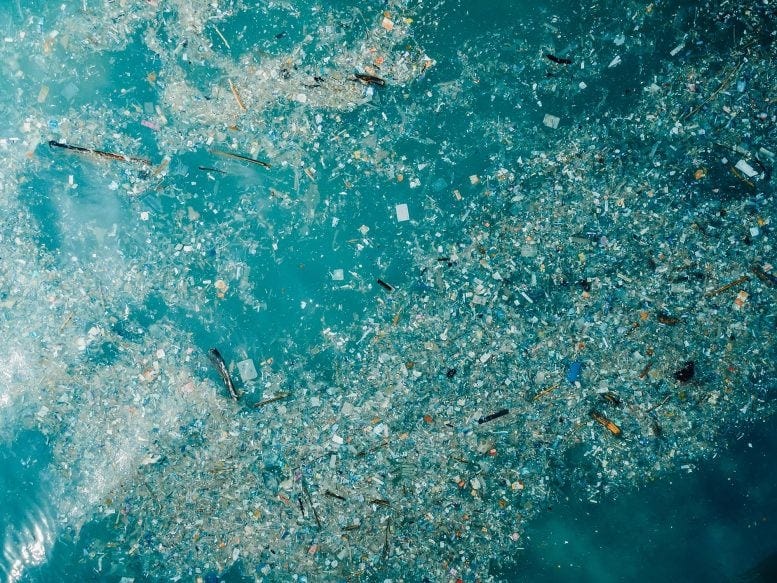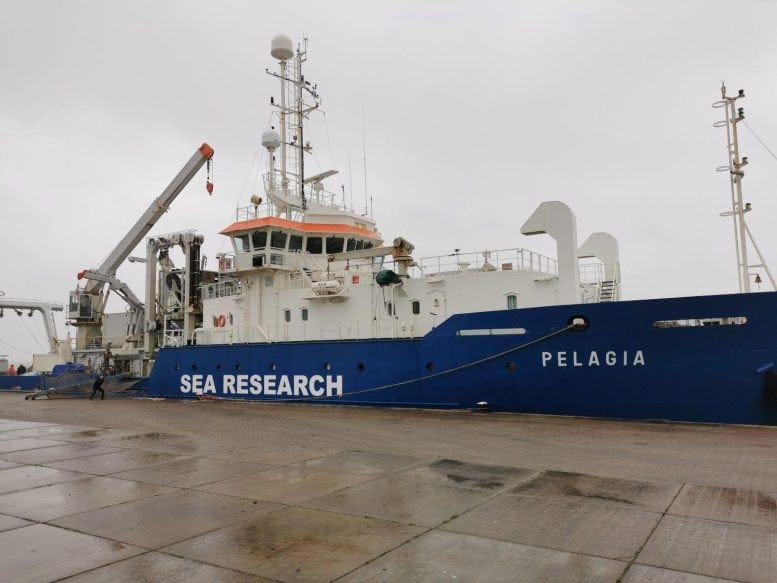SciTechDaily: “Shocking” – 27 Million Tons of Nanoplastics Discovered in the North Atlantic
By Royal Netherlands Institute For Sea Research
NTKP note:
“NIOZ, the Royal Netherlands Institute for Sea Research, is the national oceanographic institute and the Netherlands’ centre of expertise for ocean, sea and coast. We advance fundamental understanding of marine systems, the way they change, the role they play in climate and biodiversity, and how they may provide sustainable solutions to society in the future.” - NIOZ
NIOZ link: English Version - https://www.nioz.nl/en
All the world’s seas and major waterways are polluted with micro-plastics. it is a plague of human making. We are at the top of the food chain so ultimately we will pay the price in our health and that of future generations. It is important that all polluting countries clean up their fair share of the mess their citizens and corporations have created.
By Royal Netherlands Institute For Sea Research July 20th, 2025, 4 min read
Article link: https://scitechdaily.com/shocking-27-million-tons-of-nanoplastics-discovered-in-the-north-atlantic/
Facebook Twitter Pinterest Telegram
SHARE

Tiny plastic particles fill the Atlantic in staggering amounts. Their effects are only beginning to be understood.
A major new study by the Royal Netherlands Institute for Sea Research (NIOZ) and Utrecht University has revealed that approximately 27 million tons of plastic, in the form of ultra-fine particles smaller than 1 micrometer, are currently floating in the North Atlantic Ocean. These findings, which provide a deeper understanding of the scale of microplastic pollution, were recently published in Nature.
“There is more plastic in the form of nanoparticles floating in this part of the ocean than there is in larger microplastics or macroplastics floating in the Atlantic—or even across all the world’s oceans,” said Helge Niemann, a researcher at NIOZ and professor of geochemistry at Utrecht University. In mid-June, he was awarded a 3.5 million euro grant to expand his investigations into nanoplastics in marine environments and their long-term impacts.
As part of this research effort, Utrecht University master’s student Sophie ten Hietbrink spent four weeks aboard the research vessel RV Pelagia. During the expedition, which traveled from the Azores to the European continental shelf, she collected water samples from 12 different locations, filtering out particles larger than one micrometer.
“By drying and heating the remaining material, we were able to measure the characteristic molecules of different types of plastics in the Utrecht laboratory, using mass spectrometry,” Ten Hietbrink explains.
First accurate measurement of nanoplastics
Researchers from NIOZ and Utrecht University have produced the first quantitative estimate of nanoplastics present in the world’s oceans. “There were a few publications that showed that there were nanoplastics in the ocean water, but until now, no estimate of the amount could ever be made,” said Helge Niemann.
He credits this breakthrough to the collaboration between marine researchers and the expertise of atmospheric scientist Dusân Materic from Utrecht University.

By scaling up data collected from multiple sampling sites, the team estimated that the North Atlantic alone contains approximately 27 million tons of nanoplastics.
“A shocking amount,” remarked Sophie ten Hietbrink. “But with this, we do have an important answer to the paradox of the missing plastic.” For years, scientists have been unable to account for all the plastic ever produced. The findings suggest that a significant portion now exists in the ocean in the form of microscopic particles.
How nanoplastics enter the oceans
Nanoplastics can enter the ocean through multiple pathways. In some cases, they result from the breakdown of larger plastic fragments exposed to sunlight. Other particles are likely carried into marine environments by river systems. Additionally, evidence suggests that nanoplastics are transported through the atmosphere, reaching the ocean either by falling with rain or settling directly onto the water’s surface in a process known as ‘dry deposition.’
According to Niemann, the presence of these particles could have far-reaching biological effects. “It is already known that nanoplastics can penetrate deep into our bodies. They are even found in brain tissue. Now that we know they are so ubiquitous in the oceans, it’s also obvious that they penetrate the entire ecosystem; from bacteria and other microorganisms to fish and top predators like humans. How that pollution affects the ecosystem needs further investigation.”
Unidentified plastics and global scope
In the future, Niemann and colleagues also want to do further research on, for example, the different types of plastics that have not yet been found in the fraction of 1 micrometer or smaller. “For example, we have not found polyethylene or polypropylene among the nanoplastics. It may well be that those were masked by other molecules in the study. We also want to know if nanoplastics are as abundant in the other oceans. It is to be feared that they do, but that remains to be proven.”
Niemann emphasizes that the amount of nanoplastics in ocean water was an important missing piece of the puzzle, but now there is nothing to do about it. “The nanoplastics that are there, can never be cleaned up. So an important message from this research is that we should at least prevent the further pollution of our environment with plastics.”
Reference: “Nanoplastic concentrations across the North Atlantic” by Sophie ten Hietbrink, Dušan Materić, Rupert Holzinger, Sjoerd Groeskamp and Helge Niemann, 9 July 2025, Nature.
DOI: 10.1038/s41586-025-09218-1
Never miss a breakthrough: Join the SciTechDaily newsletter.


